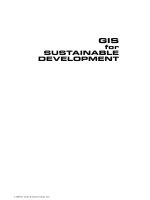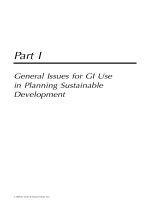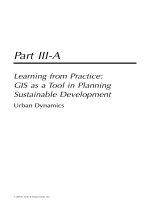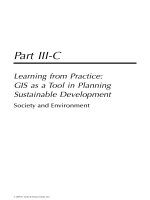Ebook Comparative elite sport development: Part 1
Bạn đang xem bản rút gọn của tài liệu. Xem và tải ngay bản đầy đủ của tài liệu tại đây (692.18 KB, 161 trang )
Comparative Elite Sport
Development:
systems, structures and
public policy
This page intentionally left blank
Comparative Elite Sport
Development: systems,
structures and public
policy
Barrie Houlihan
Professor of Sport Policy
Institute of Sport and Leisure Policy
School of Sport and Exercise Sciences
Loughborough University
Mick Green
Lecturer in Sport Management and Policy
Institute of Sport and Leisure Policy
School of Sport and Exercise Sciences
Loughborough University
AMSTERDAM • BOSTON • HEIDELBERG • LONDON •
NEW YORK • OXFORD • PARIS • SAN DIEGO •
SAN FRANCISCO • SINGAPORE • SYDNEY • TOKYO
Butterworth-Heinemann is an imprint of Elsevier
Butterworth-Heinemann is an imprint of Elsevier
Linacre House, Jordan Hill, Oxford OX2 8DP, UK
30 Corporate Drive, Suite 400, Burlington, MA 01803, USA
First edition 2008
Copyright © 2008
Published by Elsevier Ltd. All rights reserved.
No part of this publication may be reproduced, stored in a retrieval system
or transmitted in any form or by any means electronic, mechanical, photocopying,
recording or otherwise without the prior written permission of the publisher
Permissions may be sought directly from Elsevier’s Science & Technology Rights
Department in Oxford, UK: phone (ϩ44) (0) 1865 843830; fax (ϩ44) (0) 1865 853333;
email: Alternatively you can submit your request online
by visiting the Elsevier web site at and selecting
Obtaining permission to use Elsevier material
ϱ Recognizing the importance of preserving what has been written, Elsevier prints its
books on acid-free paper whenever possible
British Library Cataloguing in Publication Data
A catalogue record for this book is available from the British Library
Library of Congress Cataloguing in Publication Data
A catalogue record for this book is available from the Library of Congress
ISBN: 978-0-7506-8281-7
For information on all Butterworth-Heinemann publications
visit our web site at
Typeset by Charon Tec Ltd (A Macmillan Company), Chennai, India
www.charontec.com
Printed and bound in Great Britain
08
09
10
11
12
10
9
8
7
6
5
4
3
2
1
For my dad (‘Tiny’ Green), sadly not here to see this book
This page intentionally left blank
Contents
List of contributors
xi
List of figures
xii
List of tables
xiii
1 Comparative elite sport development
Barrie Houlihan and Mick Green
Introduction
Developing elite athletes
Pressures for convergence
Explaining elite sport policy development
Conclusion
References
2 China
Fan Hong
Introduction
The origin and development of the Chinese
elite sport system
The characteristics of the ‘whole country support
for the elite sport system’ (Juguo tizgi)
Elite athlete development
Elite sport system critique
The strategy of winning Olympic medals
in 2008
Conclusion
References
1
2
3
9
14
20
21
26
27
27
36
38
44
46
49
50
vii
●
●
●
●
●
Contents
3 Japan
Mayumi Ya-Ya Yamamoto
Introduction
Current structure of the elite sport system
The development of elite sport policy in Japan
Four dimensions of the elite sport infrastructure
in Japan
Talent identification system and the
development of potential athletes
Competition opportunities for young athletes
Distinctive features of the Japanese elite
sport system
Conclusion
Notes
References
4 Singapore
Lionel Teo
Introduction
Development of sports excellence in Singapore
National sport associations
Dimensions of elite sport policy development
Summary of key issues
Recent developments and future directions of
elite sport policy in Singapore
Conclusions
References
5 Germany
Karen Petry, Dirk Steinbach and Verena Burk
Introduction
Development and structure of the German
(top level) sports system
Dimensions of elite sport development in
Germany
Conclusions
Notes
References
6 France
Emmanuel Bayle, Christophe Durand and
Luc Nikonoff
Introduction
Characteristics of the French model of
elite sport
Tensions, conflicts, and the future
Conclusions
●
●
●
viii
53
54
54
58
63
72
74
76
78
79
79
83
84
86
91
92
104
105
108
109
115
116
116
127
142
143
144
147
148
151
156
164
Contents
Notes
References
7 Poland .
Jolanta Zy´sko
Introduction
Elite sport in Poland
Changes in the system of elite sport
governance
Discussion of the elite sport system
Conclusions
Notes
References
8 Norway
Pål Augestad and Nils Asle Bergsgard
Introduction
The elite sport system in Norway
The infrastructure of elite sport
Focusing events
Government and elite sport
The Norwegian way
Concluding remarks
Notes
References
9 New Zealand
Shane Collins
Introduction
Current structure of the elite sport system
Increasing government intervention
The business of elite sport
Important dimensions of elite sport
development
Conclusion
References
10 United States
Emily Sparvero, Laurence Chalip and
B. Christine Green
Introduction
Federal involvement in elite sport
Athlete pathways
Success of American athletes
Research and development
Elite sport development amid the chaos
Observations and implications
References
164
165
166
167
167
178
184
190
191
192
194
195
195
198
206
208
210
213
214
215
218
219
219
221
225
232
239
240
242
243
243
249
253
259
260
268
270
ix
●
●
●
●
●
Contents
11 Conclusion
Mick Green and Barrie Houlihan
Introduction
Common pressures for convergence
Mechanisms for convergence and processes
of learning
An assessment of the three ‘explanations’
References
Index
●
●
●
x
272
273
273
278
288
291
295
List of contributors
Pål Augestad, Telemark University College, Norway
Emmanuel Bayle, Burgundy University, France
Nils Asle Bergsgard, International Research Institute of Stavanger,
Norway
Verena Burk, Eberhard-Karls Universität Tübingen, Germany
Laurence Chalip, University of Texas at Austin, USA
Shane Collins, Loughborough University, UK
Christophe Durand, Caen Normandie University, France
B. Christine Green, University of Texas at Austin, USA
Mick Green, Loughborough University, UK
Fan Hong, University College Cork, Ireland
Barrie Houlihan, Loughborough University, UK
Luc Nikonoff, Health, Youth and Sports Ministry, Sport Direction,
Paris, France
Karen Petry, Deutsche Sporthochschule Köln, Germany
Emily Sparvero, Texas A&M University, USA
Dirk Steinbach, Deutsche Sporthochschule Köln, Germany
Lionel Teo, Nanyang Polytechnic, Singapore
Mayumi Ya-Ya Yamamoto, Loughborough University, UK
.
Jolanta Z ys´ko, Jozef Pilsudski University of Physical Education,
Poland
xi
●
●
●
●
●
List of figures
Figure 2.1
The administrative structure of Chinese
sport 1952–1996
Figure 2.2 The administrative structure of Chinese
sport 1997–2006
Figure 2.3 Pyramid of the selective system
Figure 3.1 Organisational structure of elite sport in
Japan
Figure 4.1 Schematic representation of the Sports
Community and the Sporting Vision
of Singapore
Figure 5.1 The development of the West German
sports system after the World War II
Figure 5.2 Model of training and performance
Figure 7.1 The organisational structure of sport in
Poland
Figure 7.2 Historical changes in the naming of the
central national administrative body for
the management of physical culture in
Poland since 1946
Figure 8.1 Direct state funding (lottery money) for
elite sport development in NIF/NOC, the
income from sponsors of NIF/NOC, and
total expenditure on elite sport by
NIF/NOC, 1996–2005
Figure 10.1 Key organisations in American sport
development
Figure 10.2 US medal performance in the summer
Olympic Games
Figure 10.3 US medal performance in the winter
Olympic Games
●
●
●
xii
37
38
40
55
85
120
134
176
181
210
252
255
256
List of tables
Table 1.1
Table 2.1
Table 2.2
Table 2.3
Table 2.4
Table 3.1
Table 5.1
Table 7.1
Table 9.1
Table 9.2
Table 10.1
Factors contributing to elite success
China’s participation in the summer
Olympics 1984–2004
China’s participation in the summer
Asian Games 1978–2002
Chinese sports budget 1981–1996
Budget for elite sports teams 1991–1997
Competitive Sports Division Budget
Allocation regarding the preparation
for the NTC, JISS, 1998 Nagano Games,
and 2002 World Cup
Top level German performances in the
sports of athletics, swimming
and hockey
Public sport financing: 1989–2006
SPARC actual total funding
Allocation of SPARC investment funds
School and professional system
support for Olympic sports
4
35
35
39
39
65
128
177
230
230
254
xiii
●
●
●
This page intentionally left blank
C H A P T E R
•
•
•
•
1
Comparative elite sport
development
Barrie Houlihan and Mick Green
●
Comparative Elite Sport Development: systems, structures and public policy
Introduction
In the 4 years prior to the Athens Olympic Games in 2004, the
UK government allocated around £70 million in direct financial
support to UK athletes. At the Games, the Great Britain and
Northern Ireland team obtained a total of 30 medals, 9 of which
were gold – an approximate cost of £2.3 million per medal. In
the run up to the Beijing Games in 2008, the government has
allocated a sum of £75 million in direct financial support. The
United Kingdom is far from being alone in providing substantial support for its elite, and especially, Olympic athletes. The
poor performance by the Australian team at the 1976 Montreal
Olympics prompted a government enquiry which led to sustained and substantial investment of public funds in elite training facilities such as the Australian Institute of Sport and in
direct support to athletes and domestic Olympic sports federations. At around the same time, the government of the German
Democratic Republic (GDR; former East Germany) was
reputed to be spending about 1 per cent of its gross domestic
product on elite sport. As Bergsgard et al. (2007, p. 170) note,
government resources ‘were very much concentrated in high
performance training centres in Berlin where there was a substantial “over-employment” of support personnel’. A DSB official
reported, following reunification, that ‘when we took over, in
East Berlin in track and field, we took over 65 physiotherapists.
Each individual athlete had his own …’. Even in free market,
non-interventionist and decentralised political systems, such as
the United States, draconian government intervention in sport
was not unusual if it was deemed necessary to protect elite
sport success. For example, in 1978 the US Congress legislated
to resolve the long-standing dispute between the National
Collegiate Athletic Association (NCAA) and the Amateur
Athletic Union (AAU) for control over elite track and field
athletes (cf. Hunt, 2007). The Amateur Sports Act marginalised
the AAU and gave the US Olympic Committee primary
responsibility for the preparation of teams to represent the
United States.
There are a variety of explanations why such a diverse range
of governments should be so concerned with elite sport success
which include international prestige and diplomatic recognition, ideological competition and a belief that international
sporting success generates domestic political benefits ranging
from the rather nebulous ‘feel good factor’ to more concrete economic impacts associated with the hosting of elite competitions.
In recent years hosting major sports events has been, for a number of countries, an important element in various forms of
●
●
●
2
Comparative elite sport development
economic development including tourism promotion (Sydney
2000 Olympic Games) and urban regeneration (Barcelona 1992
and London 2012 Olympic Games). The economic benefits of
hosting major sports events are increasingly significant in postindustrial countries where the sports-related service sector is an
important engine for growth and employment (Gratton and
Taylor, 2000). However, if countries are to be in a position to use
sport as a resource, whether for diplomatic, economic or social
objectives, they are in a much better position to exploit sport’s
potential if they possess assets in the form of recognised worldclass elite athletes. There are few governments who have not
recognised the value of sport as a high-visibility, low-cost and
extremely malleable resource which can be adapted to achieve,
or at least give the impression to the public/electorate of achieving, a wide variety of domestic and international goals. Such is
the flexibility of sport as a policy instrument that it is increasingly difficult for governments, providing of course that they
possess the necessary financial resources, not to espouse a commitment to elite sport and competition as illustrated by
Canada’s agonising over the place of elite sport in public policy
following the Ben Johnson doping scandal at the 1988 Seoul
Olympic Games. Despite many statements decrying the distortion of values resulting from a commitment to the pursuit
of Olympic medals, Canada is now investing heavily in elite
sport in advance of its hosting of the 2010 winter Olympics in
Vancouver.
Developing elite athletes
There have been a number of attempts to identify the ingredients of successful elite athlete development such as those by
Fisher and Borms (1990), Abbott et al. (2002), Digel (2002a, b),
Green and Oakley (2001a, b), Oakley and Green (2001), UK
Sport (2006). Although the various authors identify a different
number of key elements in a successful elite development system, there is considerable overlap between the analyses (see
Table 1.1). In particular, it is possible to organise the elements or
characteristics into three reasonably distinct clusters: contextual, for example, the availability of funding/wealth; processual, for example, a system for identifying talent, determining
the basis on which particular sports will be offered support;
and specific, for example, bespoke training facilities.
For Oakley and Green (2001; see also Green and Oakley,
2001a) the 10 characteristics listed in Table 1.1 represent ‘common approaches to the problem of enhancing elite sport rather
3
●
●
●
●
●
●
●
Table 1.1
Factors contributing to elite success
4
Factors
Oakley and Green
Digel
UK Sport (SPLISS
Consortium)
Green and Houlihan
Contextual
An excellence culture
Support, especially
financial, of the state
Economic success and
business sponsorship
A media supported
positive sports culture
Talent development through
the education system
Talent development through
the armed forces
Financial support
Support for ‘full-time’
athletes
Sports science support
services
International
competition
Appropriate funding
Processual Clear understanding of the
role of different agencies
Simplicity of administration
Specific
Effective system for monitoring
athlete progress
Talent identification and
targeting of resources
Comprehensive planning
system for each sport
Lifestyle support
Well-structured competitive
programmes
Well-developed specific
facilities
Participation in sport
Scientific research
Talent identification and
development system
Athletic and post-career
support
Integrated approach to
policy development
Coaching provision and
coach development
Training facilities
A hierarchy of competition
opportunities centred on
preparation for
international events
Elite facility development
The provision of coaching,
sports science and sports
medicine support services
Sources: Digel (2002a, b); Green and Houlihan (2005); Oakley and Green (2001); and UK Sport (2006).
Comparative elite sport development
than responses to the social, political and economic elements in
each country’ (2001, p. 91). Moreover, they suggest ‘that there is
a growing trend towards a homogeneous model of elite sport
development’ (2001, p. 91). Digel’s analysis (2002a, b) focuses
more on the context within which an effective elite sport system
can develop, but there is a clear overlap with the analysis of
Oakley and Green insofar as he stresses the importance of a culture supportive of elite achievement, adequate financial support, and processes through which talent can be identified and
developed.
The joint report by UK Sport, Vrije Univeriteit Brussel, WJH
Mulier Institut (The Netherlands) and Sheffield Hallam
University, UK (known as the SPLISS Consortium) compared
elite development systems in six countries (United Kingdom,
Canada, Italy, Norway, The Netherlands and Belgium) in relation
to the nine factors (pillars) listed in Table 1.1. The findings were
‘inconclusive’ insofar as there was no clear relationship between
particular factors and elite success. However, the authors did
note that the three most successful countries at the Athens
Olympic Games, Italy, United Kingdom and The Netherlands, all
scored well in relation to the following four factors: funding for
national governing bodies (NGBs); coaching provision and
coaching development; athletic and post-career support and
training facilities. The report also suggested that the similar high
scores for the United Kingdom and The Netherlands in relation
to ‘athletic and post-career support’ and ‘international competition’ might be due to both countries benefiting ‘from the learning
curve of other nations which might be described as “early
adopters” such as Australia’ (UK Sport, 2006, p. 15). Finally, the
report noted the paradox of
increasing global competition … encouraging nations to adopt … more
strategic elite sport policy in order to differentiate themselves from other
nations. The net result is an increasingly homogeneous elite sport development system which is ostensibly based around a near uniform model
of elite sport development with subtle local variations (2006, p. 16).
However, in an article also published in 2006, by many of the
same authors of the UK Sport report they qualify their initial
conclusion by stating that
It is impossible to create one single model for explaining international
success. A system leading to success in one nation may be doomed to
fail in another. Therefore it needs to be emphasised that the combination
of the nine pillars may be specific to a given nation’s context and that different systems may all be successful’.
(De Bosscher et al., 2006, p. 209)
5
●
●
●
●
●
Comparative Elite Sport Development: systems, structures and public policy
Although there are some differences in emphasis between the
foregoing analyses they have much in common, at least at the
general level of specification if not in the detail. The centrality of
dedicated training facilities, public sector financial support, an
integration of training preparation programmes with competition opportunities and an entourage of specialist support staff
was evident across nearly all analyses and received further confirmation by Green and Houlihan (2005) in their review of the
Soviet and East German sports systems and their more detailed
analysis of the elite sport systems in Australia, Canada and the
United Kingdom. Green and Houlihan suggested that there
were four common themes: elite facility development; support
for ‘full-time’ athletes; the provision of coaching, sports science
and sports medicine support services; and a hierarchy of competition opportunities centred on preparation for international
events.
Elite facility development referred to the provision of, and
priority access to, specialised facilities for training. While the
importance of access to specialised training facilities is widely
acknowledged, provision is rarely considered satisfactory. In
Australia, for example, elite swimmers complained not about the
number of competition size swimming pools, but about constraints on access arising from the lack of ownership and control
of pools by the swimming governing body. Attempts to develop
a national strategy for the location of pools, crucial in such a vast
country, were undermined by the insistence of states in establishing their own priorities regarding elite sport and facility provision. Facility provision for sailing was similarly affected by the
state–federal relations, although provision was improved in
preparation for the Sydney Olympic Games. Elite facility provision problems were even greater in Canada where the relationship between provinces and the federal government was more
fractious thus making the implementation of a national facility
strategy extremely challenging. Provincial–federal rivalry was
compounded by a pattern of funding which was determined by
success in bidding to host major sports events. Thus funding for
elite level facilities was allocated to the cities that had been successful in bidding to host events rather than to those that had the
greatest need or the greatest long-term commitment to supporting elite athletes. Even in the United Kingdom, which has a much
more centralised political system, problems persist with the provision of suitable training facilities although the establishment of
the UK Sport Institute (UKSI) network of specialist centres has
greatly improved availability and access. However, for many
sports there remains an unresolved tension between the facility
needs of elite athletes and those of non-elite/club athletes.
●
●
●
6
Comparative elite sport development
With regard to elite facilities, Green and Houlihan (2005)
argued that in all three countries swimming and athletics, both
heavily dependent on public resources for facility development,
found it hard to resolve the tension between support for elite
achievement and support for the wider membership of their
clubs. With substantial state political and financial support both
sports sought to overcome this value conflict by isolating elite
facilities from mass access, for example, through the establishment of elite sports centres in Canada and the network of elite
sport institutes (UKSI) in the United Kingdom, thus creating
separate administrative and financial arrangements to ensure
that no elite level funding could be siphoned off for grassroots
use. Sailing was an exception largely because its well-established
club structure and the financial independence of its membership
left it insulated from the competition for scarce resources that
featured so significantly in the other two sports. The attempts to
meet the acknowledged facility needs of elite competitors were
affected by two key factors: first, the resource dependency relationship between the advocates of elite sport and the state; and
second, the jurisdictional complexity at both the governmental
level and also within their own organisations that most national
sports organisations or national governing bodies (NSOs/NGBs)
had to cope with.
The standard of competition in most sports makes it
extremely difficult for an athlete to compete for medals if they
do not treat training as a full-time commitment. Green and
Houlihan (2005) found that while the Soviet Union and the GDR
funded their athletes indirectly through their armed forces or
universities, Australia, Canada and the United Kingdom provided direct financial support to their elite athletes. However, in
none of these countries was the subsidy sufficient to enable athletes to be financially independent, even in the United Kingdom
where the world-class performance programme is supported
by the national lottery. As a result many athletes had to seek
additional funding from part-time work or from commercial
sponsorship. However, corporate sponsorship of individual athletes, especially in swimming and athletics, encouraged elite
swimmers and athletes to compete abroad for prize monies
often to the detriment of their long-term development and consequently to their country’s medal-winning potential at the
Olympic Games. As Slack observed, these athletes ‘no longer
represent their club, their country, or themselves, they represent
the corporations who provide the money for their sport’
(1998, p. 3).
The provision of high-quality coaching, science and medical
support services also emerged as an important element in the
7
●
●
●
●
●
Comparative Elite Sport Development: systems, structures and public policy
elite development systems in each of the three countries.
However, Green and Houlihan noted that
In [athletics, sailing and swimming] across all three countries acceptance of coaching as an important, if not essential, ingredient in elite
success … was slow in developing. Until the advent of substantial public subsidy of both swimming and athletics investment in coaching was
not possible in the volume that would encourage talented amateur
coaches to see the occupation as a full-time career. However, even
when public funds became available … [investment in] the supporting
services of coaching, sports science and medicine [was] generally an
after-thought (2005, p. 175).
Up until the mid-1990s, public sector investment in elite sport
was directed towards facility development and direct financial
support for athletes. Consequently, with the notable exceptions
of the European communist countries, coaching was highly
variable in both quantity and quality. Much the same can also be
said of the availability of sports science and sports medicine
services as, according to Green and Houlihan, ‘all sports have
been fairly slow to explore the potential of sports science in relation to competitors’ (2005, pp. 176–177). Early engagement with
sports science tended to focus on equipment rather than the athlete, primarily because the application of science to equipment
and apparel design has greater potential to generate profits than
research into nutrition, psychological preparation and training
regimes.
The final element of the elite sport system identified by Green
and Houlihan was the structuring of domestic competition
schedules to meet the needs of elite athletes who were preparing
for international events. Green and Houlihan concluded that
‘the establishment of a competition calendar that met the needs
of elite athletes was surprisingly hard to achieve’ (2005, p. 177).
Part of the explanation lay in the conflict of interests between
clubs/grassroots members and elite performers with the interests of the latter providing a poor justification for altering the
pattern of competition for the overwhelming majority of club
members. A second factor was the frequency with which elite
athletes put their own financial interests (or those of their sponsor) ahead of those of their country. In athletics and swimming
in particular, it was often the case that athletes would prefer to
compete on the commercial Grand Prix circuit rather than in
domestic club competitions or international representative
events. Third, some NSOs/NGBs have put their need to generate income, for example, through sponsored events, ahead of the
needs of their elite athletes to prepare systematically for major
international competitions. Fourthly, some countries, Australia
●
●
●
8
Comparative elite sport development
and Canada for example, had to overcome the problems associated with the size of their countries and the consequent problems of arranging national events and competitions. Australia
faced the further problem of its relative isolation from the main
international competition circuits in all three sports. Finally, athletes who rely on scholarships from American universities, such
as those from Canada, were regularly required to put the interests of their college ahead of those of their country and their
international ambitions.
Pressures for convergence
The extent of similarity and variation between the countries
analysed by Green and Houlihan suggests a degree of tension
between pressures towards convergence in elite sport systems
and factors militating against a uniform approach to developing
elite success. Among the pressures towards convergence in elite
sport systems are globalisation, commercialisation and governmentalisation.
The assumption that the major determinants of public policy
are confined within sovereign state boundaries has, in recent
years, become progressively less persuasive as an increasing
number of formerly domestic policy issues are now embedded in
a series of supranational policy networks. Indeed so significant
have supranational actors become that some observers, for
example Andersen and Eliassen (1993), argue that the proper
focus for analysis should be the global or regional policy arena.
In his analysis of welfare policy, Deacon (1997) argues that globalisation has necessitated a revision of the traditional approach to
welfare policy analysis. Supranational policy actors, such as the
International Monetary Fund, the Organisation for Economic
Cooperation and Development, and the World Bank, who have
for many years influenced the domestic policy of poorer countries, are now shaping the discourse about the future of welfare
programmes in the richer countries of Western Europe. Deacon
also suggests that greater account needs to be taken of the ‘globalisation of social policy instruments, policy and provision’
(1997, p. 20) which takes three distinct forms – supranational regulation, supranational redistribution and supranational provision.
Supranational regulation refers to ‘those mechanisms, instruments and policies at the global level that seek to regulate the
terms of trade and operation of firms in the interests of social protection and welfare objectives’ (1997, p. 2). Examples from within
the area of sport would include the regulation by international
sports federations and the European Union of the transfer market, the role of the World Anti-Doping Agency in shaping
9
●
●
●
●
●
Comparative Elite Sport Development: systems, structures and public policy
national anti-doping policy and the growing importance of the
Court for Arbitration for Sport in settling sports-related disputes.
Welfare-related supranational redistribution policies already
operate within the European Union and at a much lower level of
effectiveness through the United Nations and key agencies such
as UNESCO. In sport the closest examples would be the operation
of sports development aid bodies such as Olympic Solidarity and
the International Association of Athletics Federations (IAAF)
sports development programme where the spread of the Olympic
diet of international sport is supported with some very modest
redistribution of resources. Supranational provision refers,
according to Deacon, ‘to the embryonic measures … whereby
people gain an entitlement to a service or are empowered in the
field of social citizenship rights by an agency acting at the supranational level’ (1997, p. 3). The UN High Commission for
Refugees and the Council of Europe Court of Human Rights provide two examples, while in the area of sport the Court of
Arbitration for Sport is beginning to fulfil a similar role for athletes. At the very least the wealth of research on globalisation
requires that any comparative analysis of elite sport development
systems is sensitive to the increasing significance of supranational
organisations for domestic policy.
Operationalising the concept of globalisation has proved
difficult once consideration moves from a simple cataloguing
of effects to an analysis of forms (Houlihan, 1997; Hirst
and Thompson, 1999; Scholte, 2000), causes (Wallerstein, 1974;
Robertson, 1992; Boli and Thomas, 1997) and trajectories of globalisation (Robertson, 1995; Hirst and Thompson, 1999; Houlihan,
2007). Despite the eclectic nature of much of the literature on globalisation, there is broad agreement that (1) globalisation should not
be conceptualised as a coherent and uni-directional process, (2) the
analysis of the significance of cultural change must acknowledge
the varying depth of social embeddedness and that there is a need
to be wary of granting too much importance to shifts in the popularity of particular sports or events, (3) the impact of globalisation
on policy within individual countries will vary due to the differential ‘reach’ of global influences and the variability in ‘response’ in
different countries and (4) while the political and cultural dimensions have a degree of autonomy from economic processes, it is
economic interests that have become much more prominent in
sport in the last 25 years as major sports, and sports events have
become increasingly a focus for private profit rather than state subsidy (see Hirst and Thompson, 1999; Held and McGrew, 2002;
Houlihan, 2003; Scholte, 2000).
The second pressure making for convergence, commercialisation, has three dimensions: first, the transformation of many
●
●
●
10









